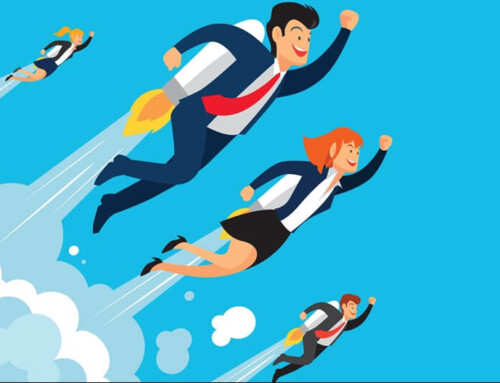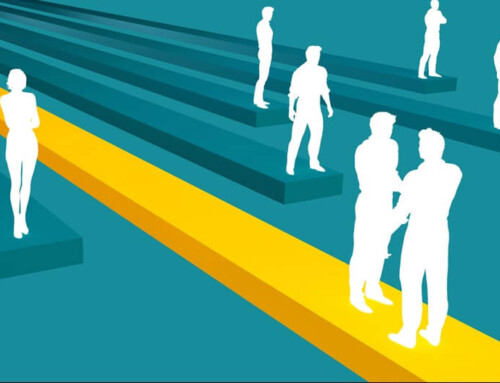When it comes to incentivizing employees, most companies stick to a classic recognition model. This method seeks to improve productivity, morale and performance through praise, recognition and promotion opportunities. While creating a culture of recognition is certainly important, this model fails to take into account that workers need more than a pat on the back and a carrot dangled in front of them to push for long-term business success. As a result, performance tends to be mediocre at best.
It may seem tempting to stick with the old familiar model. However, organizations that are looking to outperform competitors will want to note that non-cash programs, such as travel incentives, yield 3 times higher revenue increases than other incentive programs!1 The reward model, pulls participants towards the desired outcome in a more effective way encouraging top performers to stretch further, mediocre performers to improve performance, and the disengaged to become active participants again.
What else makes the reward model so much more successful? Here are five more reasons:
1) Promotes Healthy Competition
When done correctly travel incentives will introduce fun and healthy competition. An experience-based reward will help you avoid the negative aspects of competition that might accompany monetary incentives. Employees will challenge each other to perform better, while still chatting about the possibilities this trip might afford. (Learn more tips on creating healthy competition here.)
Pro Tip: Make sure to send out regular updates as goals are met. This is also a great chance for employees to measure their own personal goals. Don’t forget to offer tools to help them gauge their success as well as help them achieve it!
2) Reveals Weak Links
A reward-based incentive program will also make it clear who the under-performers are. This will allow you to give these employees the attention they need. It may be a simple matter of retraining them on certain issues. They may also be feeling discouraged or unmotivated and need to be coached and mentored.
Pro Tip: Retraining should never be in a classroom environment. Ideally these should be one-on-one, customized and personalized based upon the challenges that under-performers are facing. The most valuable coaching comes from an awareness of what skills are lacking as well as what mental obstacles may be hindering success and how to overcome them.
3) Boosts Morale
It goes without saying that motivated workers are good for business. But, did you know that failing to engage your workers can cost your company thousands of dollars every year? A study by CareerBuilder reported that out of 69% of employers who say they were affected negatively by a bad hire, 41% believed it cost their organization over $25,000.2 Another 24% said it cost them more than $50,000!
Travel incentives are a great way of boosting morale and engaging your workers. They are more personal and unique than simply a cash bonus. Research has shown that travel is the most preferred reward for high-producing employees.3 Making sure your employees are happy and engaged will also increase loyalty and attract valuable new hires.
Pro Tip: Attracting top talent in a competitive market is as much about the right match between the corporate culture and key talent. When you include reward programs as part of your compensation program you send a signal that you are willing to recognize, value and invest in top talent. This can be extremely attractive and set your company apart from others.
4) Meets Business Goals
The reward model will also give your company the chance to meet specific metric goals. Remember to set goals that are concrete and attainable. This will allow your team the chance to celebrate real victories, instead of an illusive goal where even the best performance is never quite good enough.
Pro Tip: When setting goals be sure to include both short-term as well as long-term goals. Including both can help build momentum as well as ensure that you’re making progress along the way!
5) Creates a Pattern of Behavior
You will also see long term payoff from a well-executed incentive trip. Not only will immediate company goals be met, but it will also create long-term patterns of behavior. This will enable your business to set its sights even higher for the next program.
Pro Tip: When your program is completed, don’t just recap and conclude it. If you want the behaviors to stick long-term, be sure to build in refresher, connecting points at various points in the future. This can be with a new incentive program, with clever reminders, with micro-incentives, and so forth. But don’t lose the momentum you’ve gained simply because the program has concluded! Keep it going for as long as you can.
Conclusion
Tune into the needs and desires of your employees by implementing a non-cash incentive model. Your employees will thank you and your business will be more successful than ever.
Want to set up a reward program that will help you achieve your goals? Contact Gavel International to learn more about our travel incentive and corporate meeting programs.
- http://theirf.us1.list-manage1.com/track/click?u=5f938cc2dd9083209c324a02f&id=c70abfaf6b&e=a22c211f72
- https://www.glassdoor.com/employers/blog/the-cost-of-a-disengaged-employee/
- http://theirf.org/research/2015-landmark-study-participant-award-experience-preferences/1619/
This article was last updated on May 30, 2025
- 4 Tips for Preserving Company Culture and Morale While Scaling Up - June 23, 2025
- Revitalize Meetings with Engaging Breakout Sessions - June 9, 2025
- Reconsider Best Practices Before They Leave Your Business Stranded - May 26, 2025






